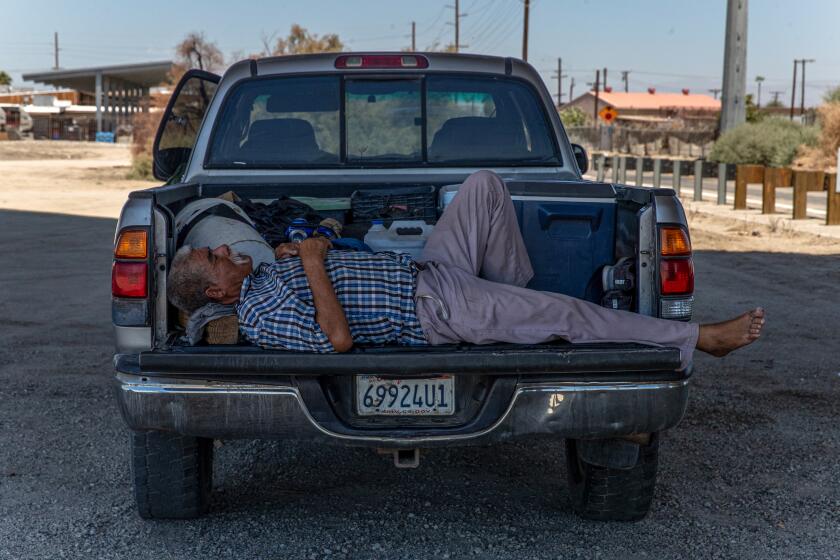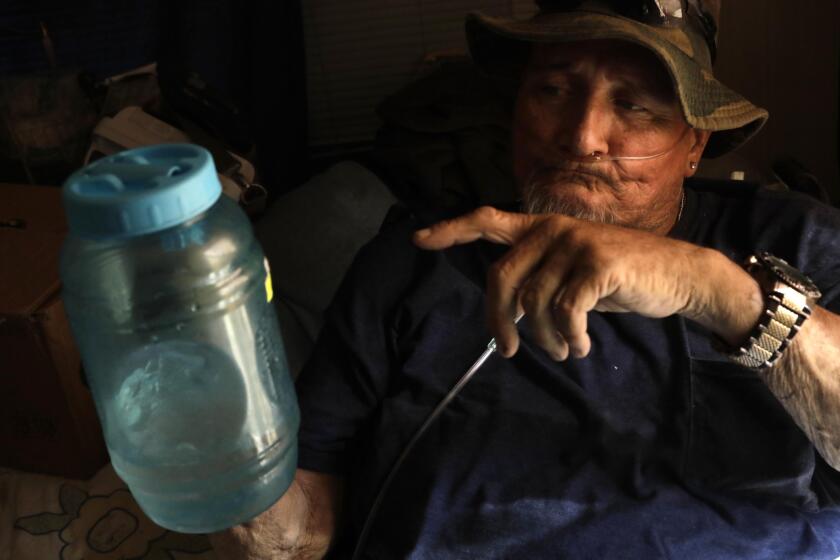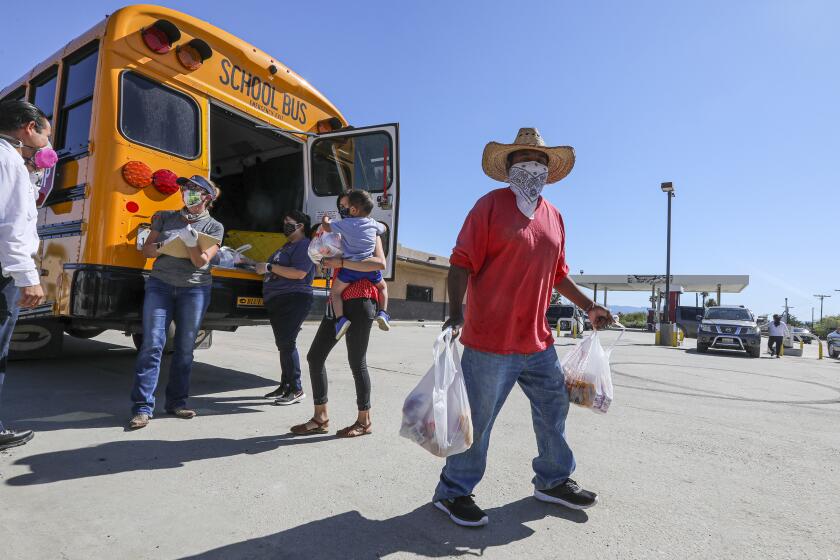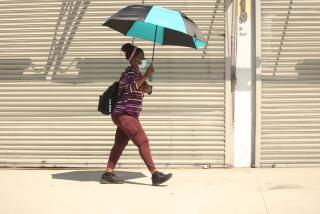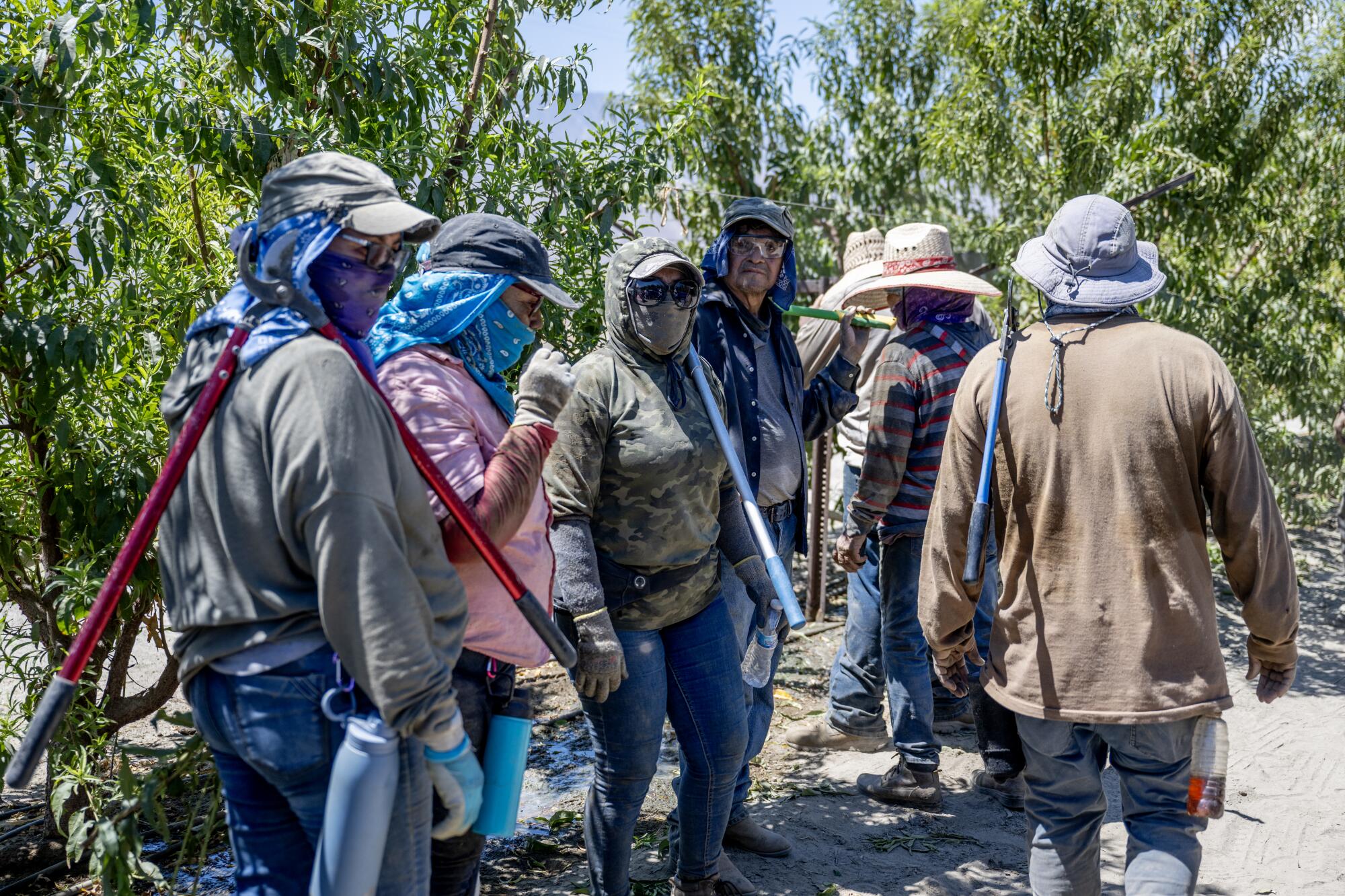
One morning this summer, several days into temperatures above 110 degrees in this farming community, Socorro Galvez, 53, began to feel weak as she picked grapes in the suffocating heat. The green vines suddenly looked yellow, her sweat turned cold and she felt like she was going to faint. It happened again, just before the end of her shift. Each time, she sat for a while and got back to work.
When she returned home to her mobile home that afternoon, exhausted and dripping in sweat, the window air-conditioning unit in her living room was barely working. It didn’t help that her husband, daughter and five grandchildren were all gathered in the same small room, relying on the same unit, praying it wouldn’t trip the breaker. There was no relief.
“You couldn’t feel the air,” she said.
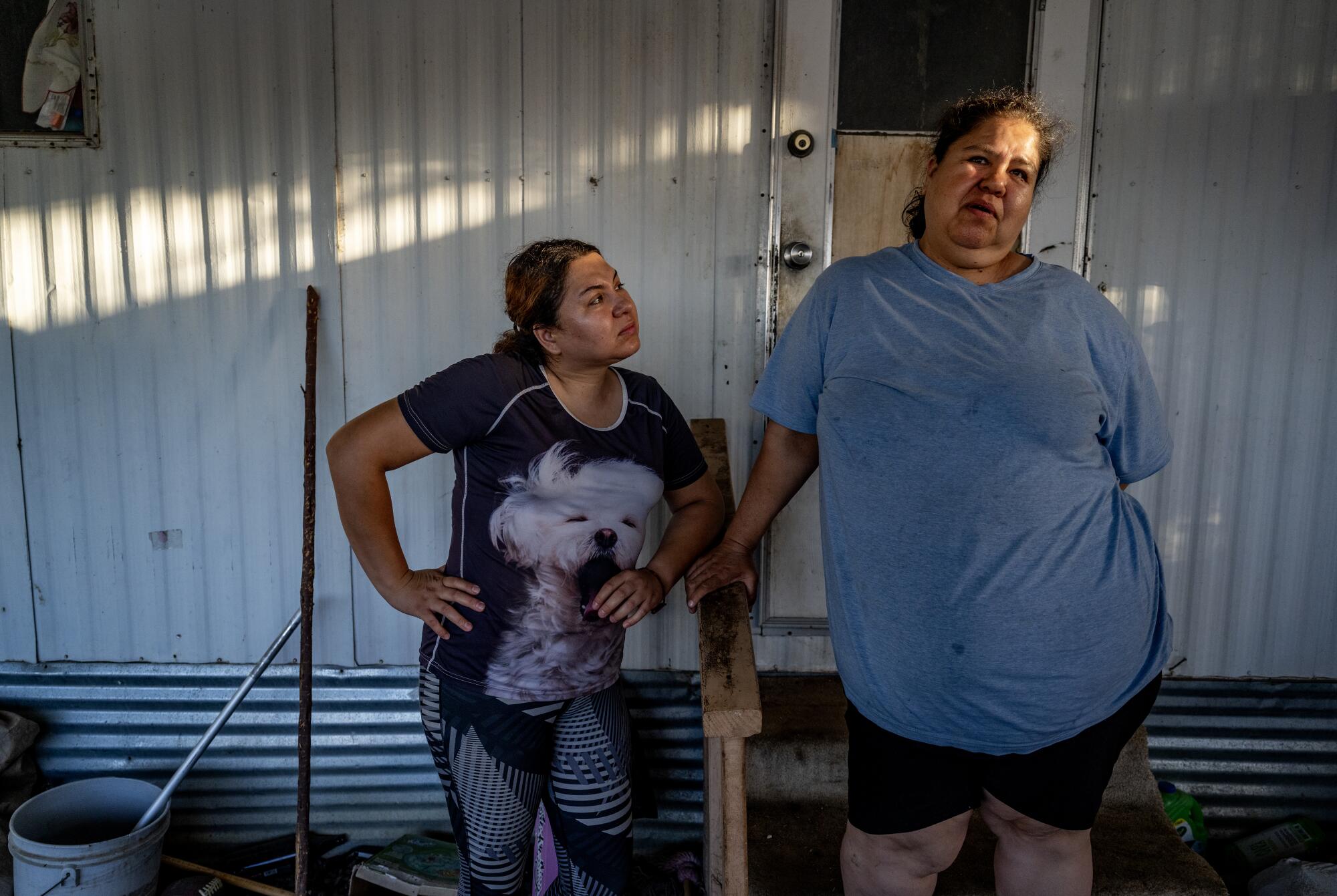
Grapes, dates and other crops have been made to flourish in the dry, searing heat of the eastern Coachella Valley. But farmers and civic leaders never built the basic infrastructure needed to shelter the workers who live in such a harsh region. So as climate change pushes temperatures to increasing extremes, many workers are being exposed to dangerous heat for hours during the day only to return home and struggle to find any respite in trailer parks where the power supply is unstable, air conditioning is minimal and water is often unclean.
“It’s an issue that for generations, for decades, has been neglected,” said Riverside County Supervisor V. Manuel Perez. “This is the issue that keeps me up at night.”
As the state settled into a prolonged heat wave, officials warned residents to stay cool. For the homeless and outdoor workers, it’s easier said than done.
Transforming the arid eastern Coachella Valley into a place of agricultural abundance took innovation, investment and the painstaking labor of farmworkers.
In the early 1900s, U.S. government scientists who brought dates from the Middle East and North Africa discovered that with enough water the fruit could thrive in the region’s dry heat. Local leaders promoted an American fantasy of the Middle East to boost tourism and their crops. Communities were renamed Mecca and Arabia; the yearly date festival offered an “Arabian Nights” pageant and the crowning of “Queen Scheherazade.” The mascot for Coachella Valley High School in Thermal was the Arabs (later changed to the “Mighty Arabs” in consultation with the American-Arab Anti-Discrimination Committee).
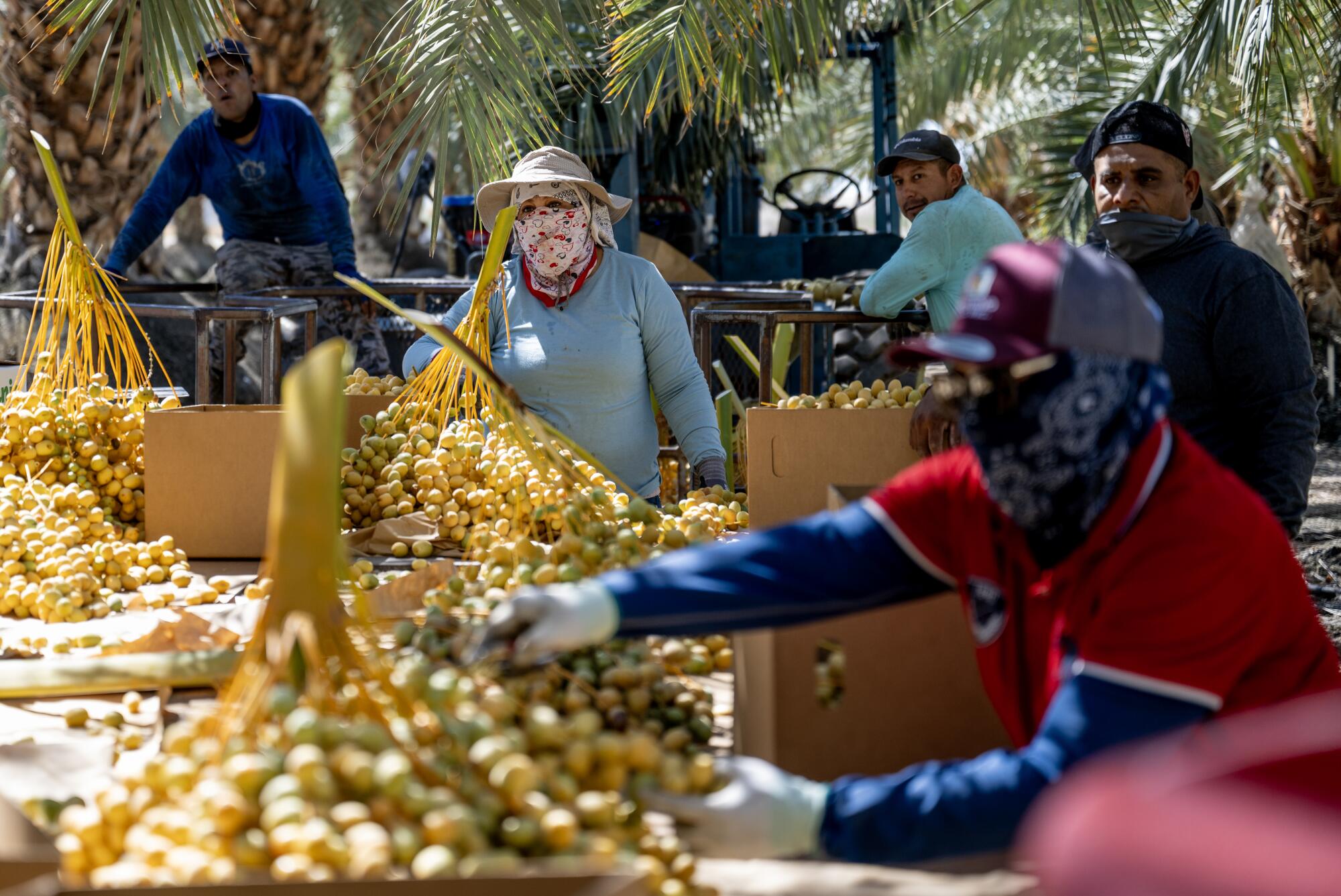
For the farmworkers who arrived to support the industry — many of them from Mexico or of Mexican descent — the reality of working in the Coachella Valley has meant toiling under a blistering sun for months out of the year and learning to live with the persistent risk of heat illness.
“Even without the heat, it is such a difficult job to have,” said Lupita Lua, policy advocate for the Leadership Counsel for Justice and Accountability, a nonprofit advocacy group. “The heat just makes it 10 times worse.”
In recent years, this already punishing environment has become even more extreme as climate change leads to more frequent days of dangerous heat. In July, the Coachella Valley experienced 16 days in which temperatures were 115 degrees or higher and 23 days with temperatures 110 degrees or above. It was the hottest month on record.

On those scorching days, farmworkers said, seeing someone get dizzy or start to feel faint or falling ill themselves was a regular occurrence. Those cases go largely unreported in official statistics since workers, many of whom are unauthorized immigrants and do not have insurance, rarely seek medical treatment. Heat-related deaths are also chronically undercounted.
But even the officially documented numbers are stark: Since 2018 there have been nearly 2,300 reported cases of heat-related illness and 135 heat-related deaths in the Coachella Valley, according to Riverside County data.
Read all of our coverage about how California is neglecting the climate threat posed by extreme heat.
Ana Padilla, executive director of the UC Merced Community and Labor Center, said she worries about the long-term health effects of persistent heat illness, lack of clean water and unstable access to air conditioning.
“Something that we need to acknowledge as a problem is that there are some farmworkers who just don’t have access to cooling down,” Padilla said.
Research has shown that people develop kidney disease as a result of heat stress; over time, that can lead to deaths that are not likely to be counted in official heat-related death statistics, Padilla said.
This year, the labor center published the results of the largest academic survey ever conducted on the health and well-being of California farmworkers. Nearly 39% of the 1,200 participants said they have problems keeping their homes cool.
The survey also found that, while California is one of the few states with rules in place to protect farmworkers working in the heat by requiring shade, water and rest, those rules are not always followed.
Nearly half of respondents reported that their employers never provided a heat illness prevention plan as required by law. Fifteen percent said their employers did not provide enough shade during breaks in the heat and nearly a quarter said their employers did not monitor workers for heat illness when temperatures reach 95 degrees or higher.
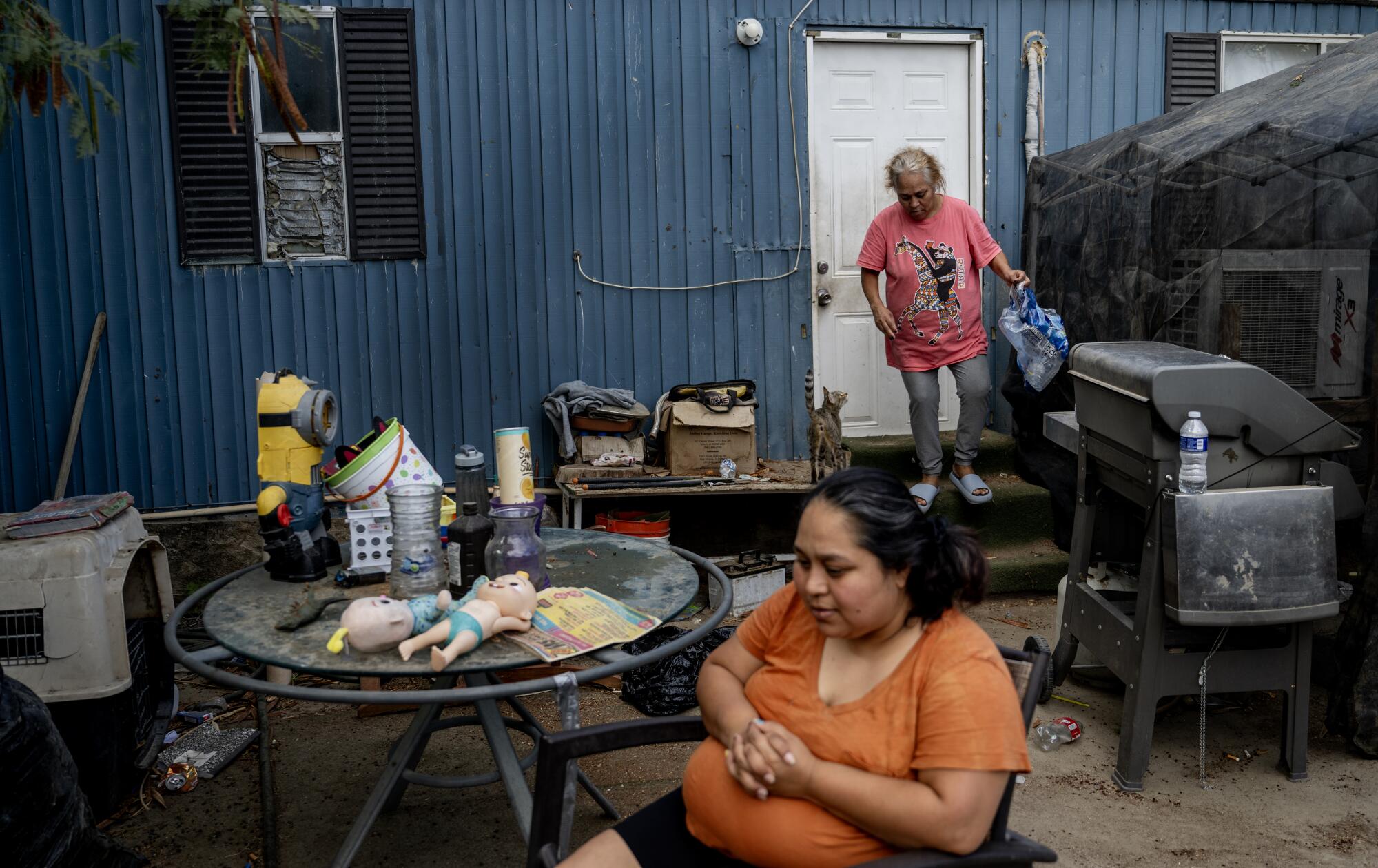
Eliana Ramirez, 36, has worked in the fields of the Coachella Valley since she was 18 years old, moving from grapes to onions to peppers, depending on the season and available jobs.
In July, with high temperatures averaging nearly 113 degrees, she prepared pepper fields for planting, crouching to carefully lay water lines and placing stakes to support seedlings. She earns $15.50 an hour, the minimum wage, which is the going pay rate for farmworkers.
Over the years, she’s started feeling the impact of the heat more and more. “My body can’t take it anymore,” she said.
Many times, she has felt so sick working in the scorching sun that she has had to go home early, she said. Sometimes it happens two or three times a week.
“I start feeling like I am going to vomit, my head starts to hurt, I start sweating and sweating and my heart starts to beat fast,” she said.
Her current boss is understanding and lets her go home. But she loses her pay for the hours she did not work and heads home to a trailer at Oasis Mobile Home Park in Thermal that offers little comfort.
Coronavirus brings new levels of misery to impoverished California trailer park
The home, which Ramirez shares with her mother, husband and four children, sits on the side of a main road, near a gas station, under the partial shade of a pair of date palms. The walls of the aging mobile home are thin, with aluminum siding and little insulation.
Like most of her neighbors, the family relies on window units for cooling, but sometimes the units just blow hot air. Even when they do work, power outages happen frequently, especially on the hottest days, when everyone in the park is running the AC, trying to stay cool. To save energy, Ramirez’s mother washes clothing by hand outside under a mesquite tree.
Though farmworkers have been toiling in these fields for more than a century now, their conditions have improved little with the passage of time.
A few years ago, the EPA found unsafe levels of arsenic in the drinking water at Oasis, which houses hundreds of residents. Twice a week, Ramirez and her family cross the street to pick up cases of bottled water from volunteers with the nonprofit group TODEC, which works with the county to distribute the water.
One Saturday this summer, when the high temperature was 114 degrees, the power at Oasis went out at 3 p.m. After a couple of hours in the suffocating heat of the trailer, Ramirez’s 14-year-old daughter started to vomit and couldn’t stop. Her skin turned pale and yellow. Ramirez drove her to the emergency room, where she was diagnosed with dehydration and given IV fluids.
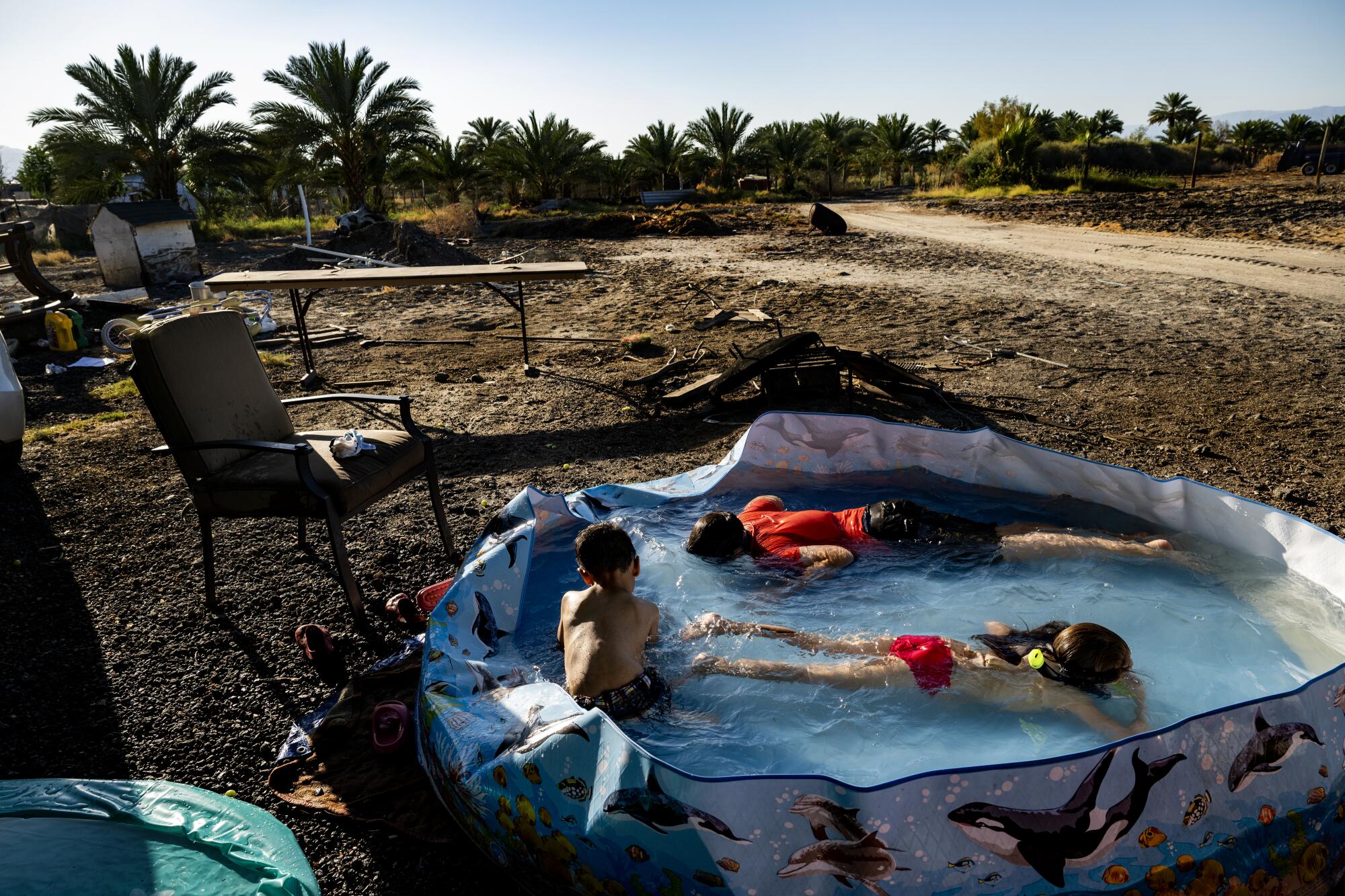
Like most families here, Ramirez has her kids stay inside for large parts of the day in the summer to keep them safe, even though they plead to go outside. The lights also stay mostly off, to save energy and help the home stay cool.
Lately, the kids have been asking Ramirez to take them to the beach. They went once last year, to Corona del Mar, where they ate homemade ceviche and cut-up fruit and spent the day playing in the sand. No one wanted to leave when it was time to go. But her truck is having mechanical problems and she worries it will break down in the heat if they go again.
“They want to leave,” she said. “We can’t. Not right now.”
For advocates, the large number of challenges facing workers and families in the eastern Coachella Valley can sometimes feel overwhelming — low wages, the lack of affordable housing, dirty water, inadequate electricity — all of it made worse by the growing threat of increasing heat.
“Imagine living in an aluminum trailer, sometimes it’s two or three families, where you’re just used to having blackouts in the heat. That’s a normal thing” in the eastern Coachella Valley, said Luz Gallegos, executive director of TODEC. “It shouldn’t be normal.”
In the summer, the group distributes sun hats and cooling shirts to workers in the fields to offer some relief from the heat.
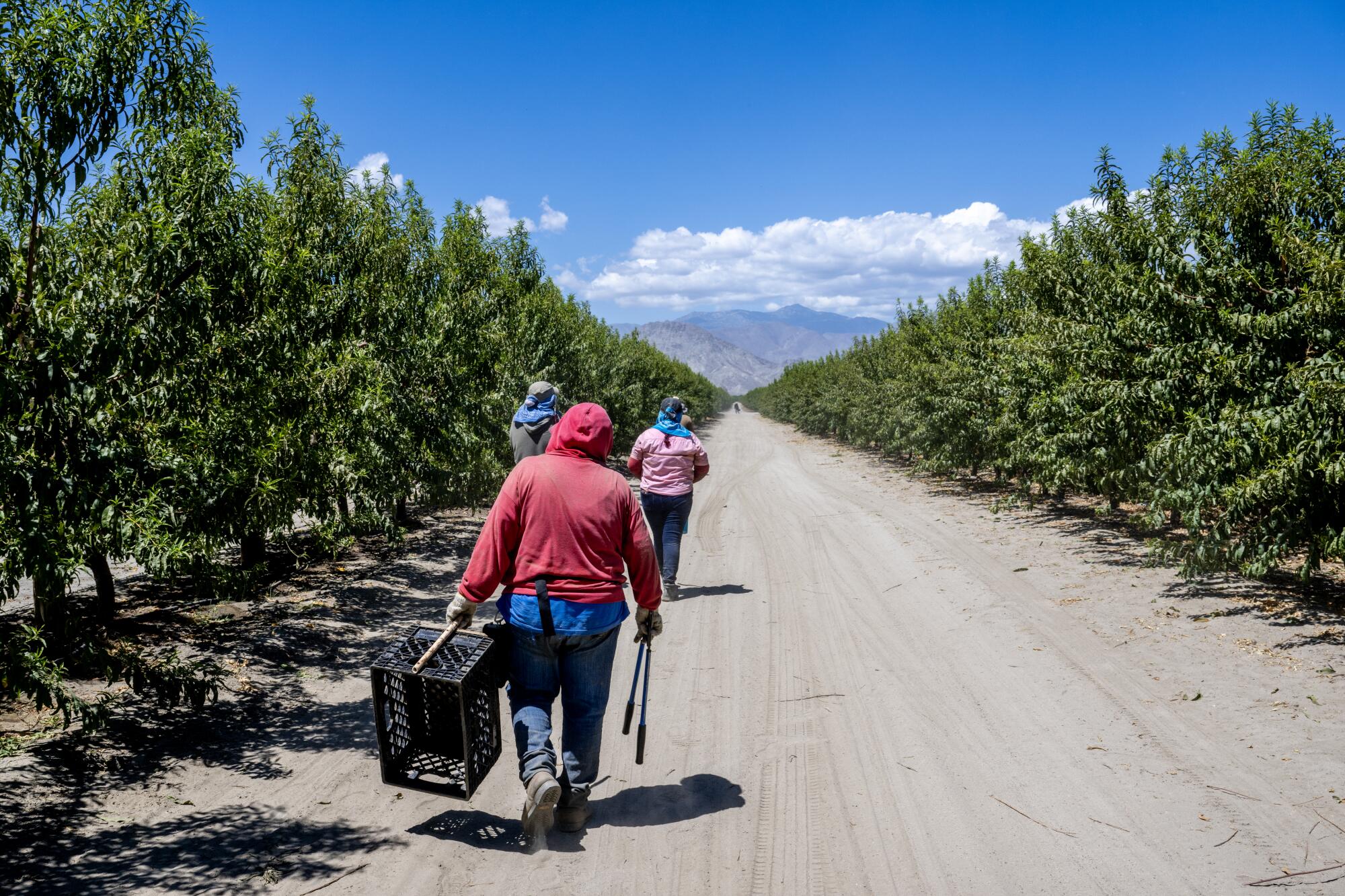
“Sometimes you feel like there’s no hope,” said Lua, with the Leadership Counsel. “But we just have to keep fighting.”
Her group is working with the county on a proposed Enhanced Infrastructure Financing District for the eastern Coachella Valley, which would allow the county to tap property tax revenue to help pay for water, sewer, utilities and other needed infrastructure in the region. Over 45 years the county expects to raise about $228 million, officials said.
That amount is “only a drop in the bucket for all of our needs in the area,” said Perez, the county supervisor. “But it’s at least a drop. It’s at least something that can help us get on our way.”
The hope, he added, is that the money will be a catalyst for development.
At recent meetings to gather community input for the proposal, residents repeatedly turned the conversation to immediate needs. Some asked whether residents would have direct access to money to help them deal with the lack of clean water and inadequate electricity now.
“If this is not a solution for those issues, then I really want to stress to you all that there needs to be a solution,” said Wendy Valdez, whose family lives in the region. “It is not American for people to be living here as if they were living in Third World countries.”
Local officials also are working to move residents from Oasis Mobile Home Park — but those plans could take a few years, county officials said. In part, they have been stymied by the lack of affordable housing in the region, which leaves few homes for people to move to.
Another challenge is the unauthorized status of many workers, which makes them ineligible for loans and some housing.
“The reality is that a lot of the people who live in these unpermitted parks are undocumented and they don’t qualify for affordable housing funded with federal money,” said Pedro Rodriguez, executive director of the Coachella Valley Housing Coalition, the largest low-income-housing developer in the region. “It’s a sad situation because these are the people working in the fields, picking the food that we eat, and these policies don’t allow them to have a decent home.”
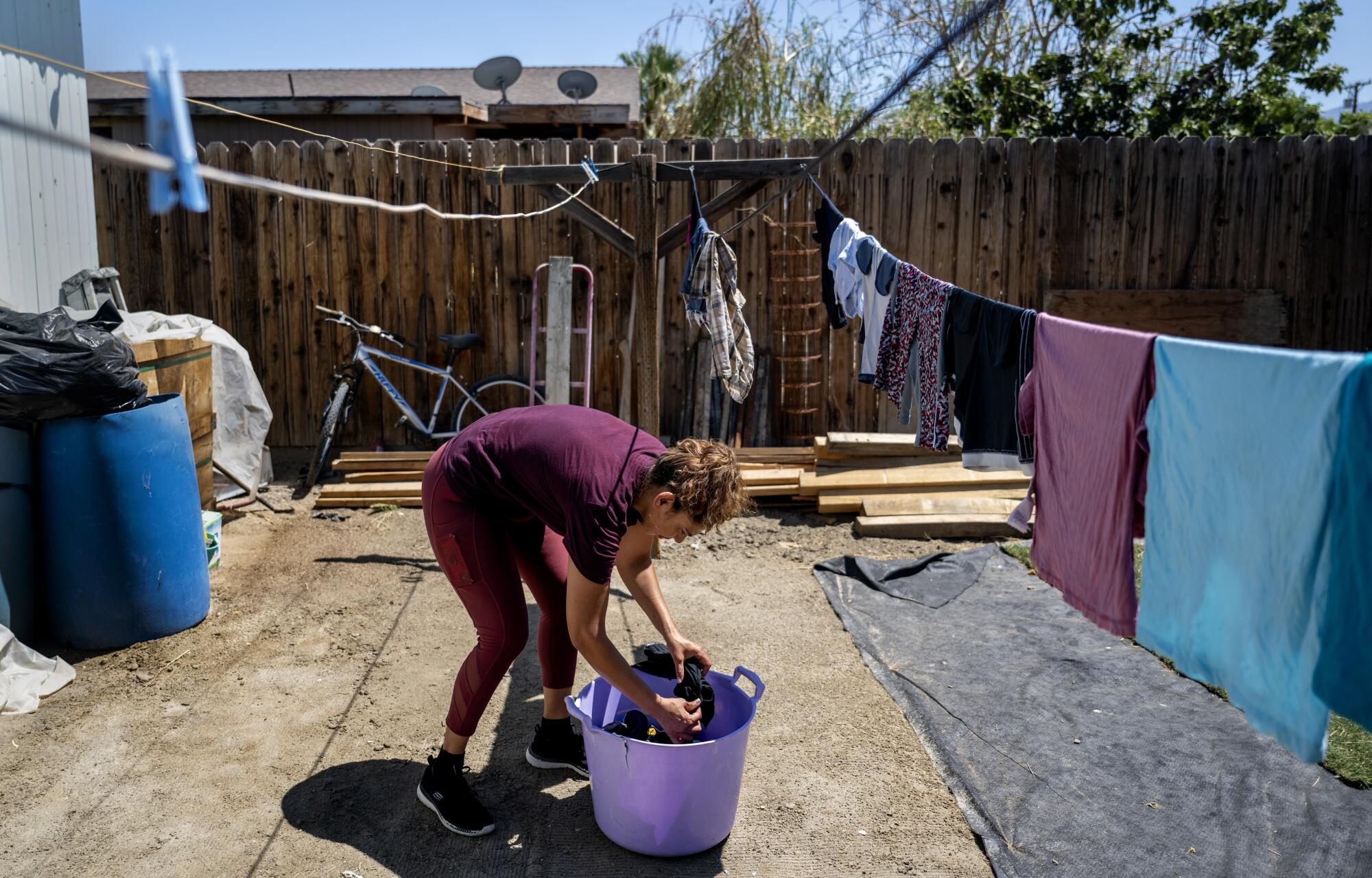
The coalition is working with officials to push for changes to those rules, he said.
There was a time when farm owners in the region provided housing for their workers. But accusations of squalor led the state and federal government to impose regulations on that housing and growers largely stopped providing it.
Today, in the face of a severe shortage of affordable and available rental housing, some migrant workers live out of their trucks, which they park under bridges or near stores during the harvest.
For those who live in the region full time, unpermitted trailer parks emerged to fill the housing gap. In the 1990s, the county began closing illegal parks. But without alternative affordable housing, residents instead moved into parks on tribal land, which was exempt from county code enforcement.
Authorities want the Coachella Valley trailer park to be closed unless many repairs are made.
One of the largest of those parks, known as Duroville, became notorious for its squalid conditions and was ordered shut down by a federal judge in 2009. Residents celebrated when they were finally moved to a new mobile home park that was built with millions of local, federal and private dollars. But dozens of unpermitted trailer parks remained.
Some, like Oasis, are massive, housing hundreds. But the eastern valley also is dotted with smaller parks interspersed with the fields; often they’re just a handful of trailers sitting side by side on a dirt road.
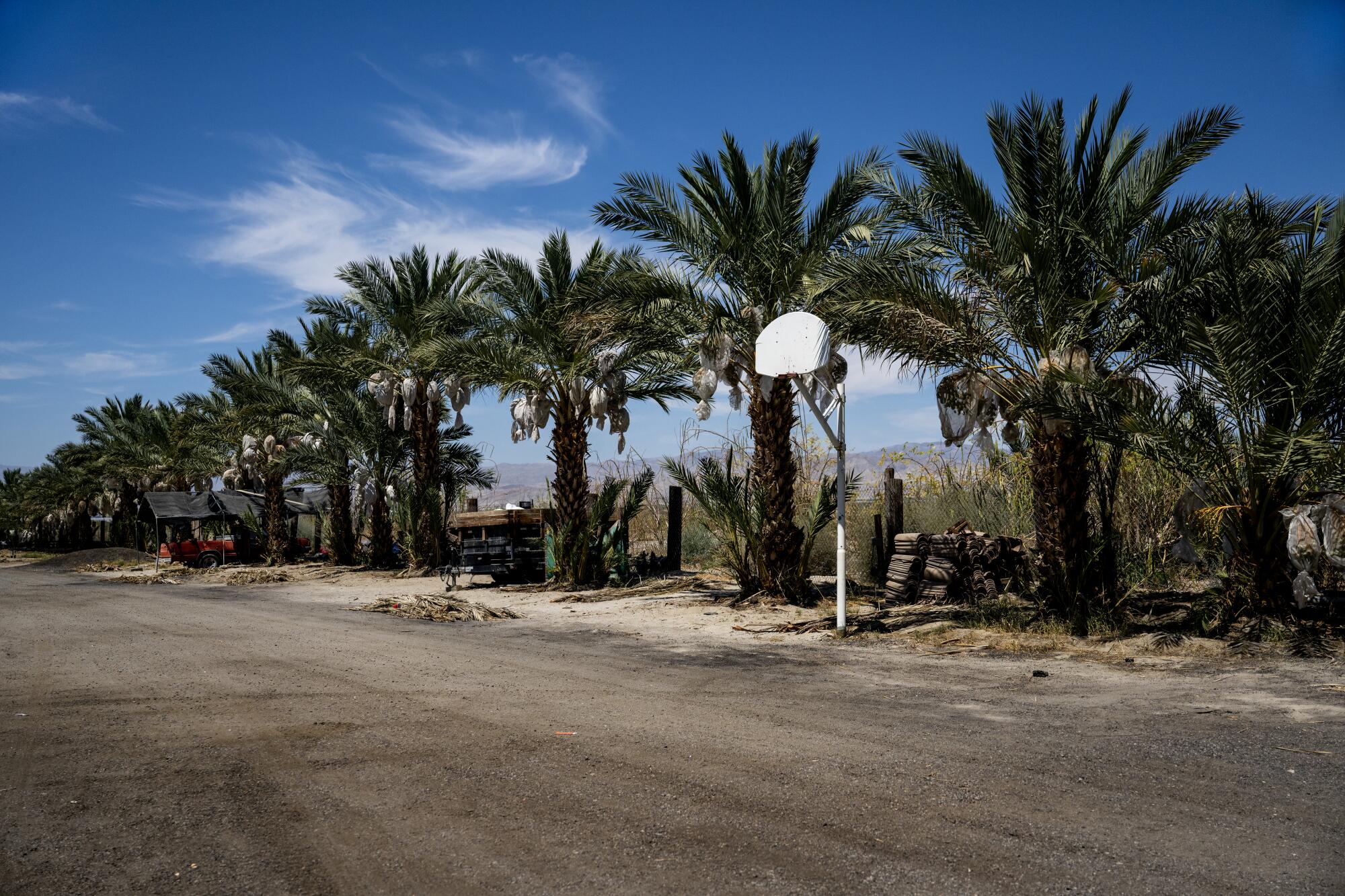
Socorro Galvez lives in one of the smaller parks on a dirt road in Thermal, along with several members of her family. Her sister lives in a trailer just a few doors down. A niece is next door. A handful of mesquite trees that her family planted after they arrived years ago from Sinaloa, Mexico, offer a little shade from the brutal sun. Just outside the park, massive sprinklers water a bright green plot of golf-course turf throughout the day.
Rent is $460 a month and electricity, in the summer, costs nearly $400 a month, though power outages happen multiple times a week. There are AC window units in each of the rooms and in the living room, but during the day they use only the unit in the living room to avoid overtaxing the electrical system.
In the summer, Galvez puts up blackout curtains to keep the sun out and keeps most of the lights off, save for a string of Christmas lights around a painting of the Virgin of Guadalupe. If too many lights are on, they will trip the power out.
Even with the air, the living room heats up in the afternoon, especially when Galvez and her husband cook in the home’s tiny kitchen and her children and grandchildren gather in the living room.
As at Oasis, the EPA has issued an emergency order to the owners of the park where Galvez lives after finding high levels of arsenic in the drinking water — the chemical occurs naturally in the region’s groundwater. The order required the owners to comply with federal safety regulations and to provide at least one gallon of clean water per resident per day.
Galvez and her neighbors now have a filter system under their sinks — but they say the water runs out quickly and takes hours to refill, forcing them to buy their own bottled water.
In her living room, Galvez keeps a large stack of 40-bottle packs she buys at Costco. Each pack lasts only a couple of days in the summer, she said.
On a morning in July, Galvez and her husband woke up at 4 a.m., to prepare for a day of work in the grape fields. It was already 90 degrees outside — the high later that day would reach 120.
Inside, the trailer felt warm and humid as Galvez sauteed potatoes on the stove to make burritos for their lunch. Her husband packed a cooler with ice, frozen bottles of water and frozen electrolyte drinks.
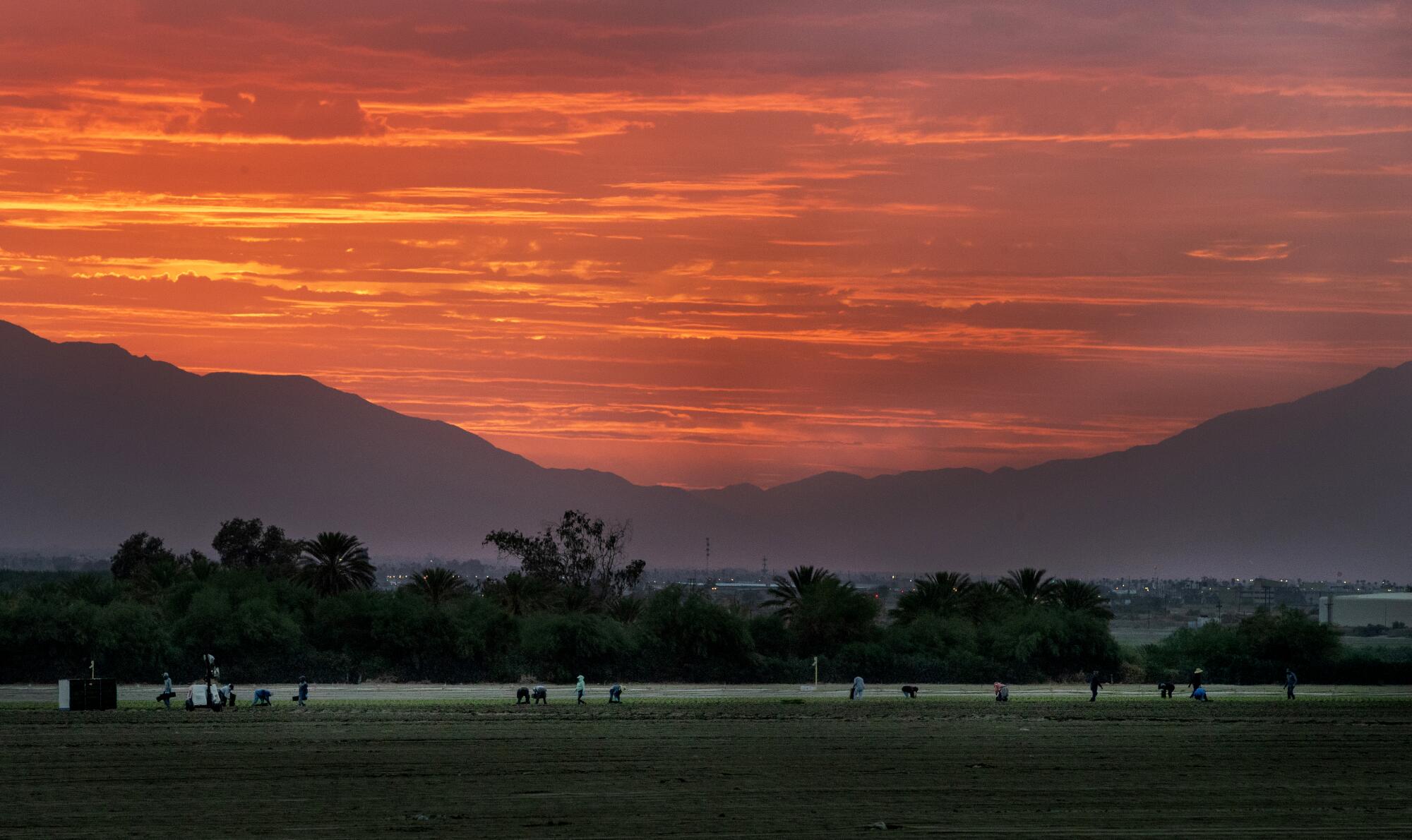
As she wrapped burritos in tin foil, Galvez recalled that a few days earlier, on the same day that she had twice felt sick, a man in his 80s who was working in the grape fields alongside her had gotten so sick he’d left and had yet to return. She wonders how he is.
There are elderly workers toiling in the extreme heat every season.
“That’s just what people have to do when they need the money,” she said.
She grabbed her hat and four scarves, which she would use to protect her face and head from burning in the sun, and she and her husband stepped out of the warm mobile home into a blanket of predawn heat, got in their truck and joined the line of trucks emerging from the trailer parks and heading toward the fields.
More to Read
Sign up for Essential California
The most important California stories and recommendations in your inbox every morning.
You may occasionally receive promotional content from the Los Angeles Times.
